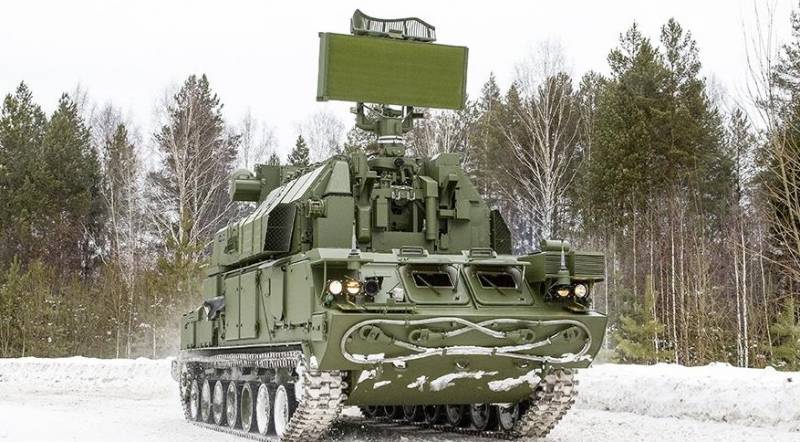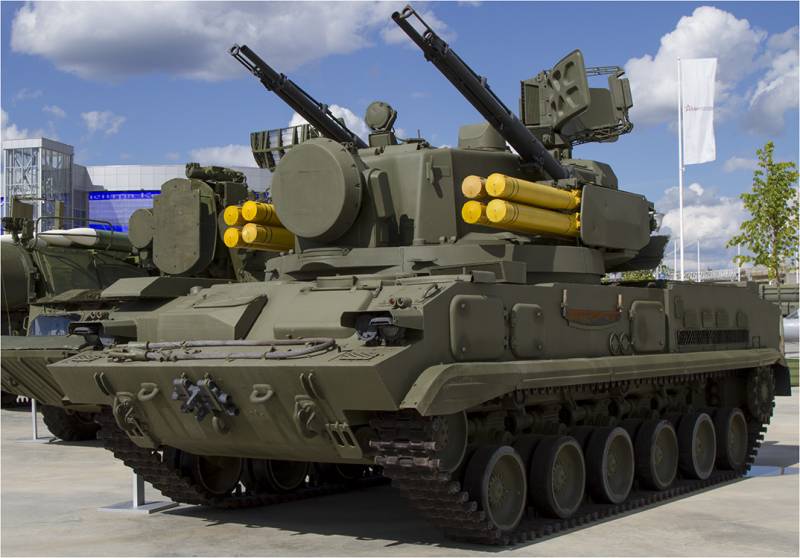Work closely together
The military conflicts of recent years clearly testify to the increased role of UAVs in organizing and conducting air raids. And the role of these air attack weapons continues to grow as their interception becomes more difficult. The point here, of course, is not the pilot’s lack of airborne data, after all, drones there were also V-1 and V-2. The fact is that modern UAVs “suddenly” began to have capabilities disproportionate to the costs of their production and acquisition. They are capable of inflicting significant damage to ground targets and troops, being cheap and, accordingly, massive. weapons. Attempts to counter them using powerful air defense systems and long-range and medium-range air defense systems are inadequate by the criterion of "cost-effectiveness". Shooting down “bayraktars” with one and a half-ton SAMs of the S-300 air defense system is like lighting a cigarette from a hundred-dollar bill. As a result, short-range air defense systems come to the fore as the most cost-effective shots. But their missiles are often too expensive to destroy compact and cheap UAVs. (Although, of course, the cost-effectiveness of defense equipment should be assessed not in comparison with the means of attack, but in comparison with the price of the guarded object.) The next step would be to use short-range anti-aircraft missiles, MANPADS and ZAK. But another problem pops up here - these systems have rather limited capabilities for reconnaissance of the air situation and the defeat of subtle and high-speed targets.
Short-range air defense systems come to the fore as the most cost-effective shots. But their missiles are often too expensive to destroy compact and cheap UAVs.
The designers of the Izhevsk Electromechanical Plant Kupol and the Rubin Research and Production Enterprise managed to solve this problem. They developed a system for interfacing Tor air defense systems with a wide range of air defense systems, man-portable air defense systems and close-range air defense systems. The “Tor” air defense system in this connection is the “leading” combat vehicle, and the short-range systems play the role of followers, building their work in support of a powerful target detection station and no less powerful “big brother” airborne computing center.
At the moment, Tunguska-M1 air defense systems, BMO Gibka-S, Shilka-M4 air defense systems, Bagulnik air defense systems and a set of automation tools for anti-aircraft gunners for air defense systems, can be used as “slave” combat vehicles in the near future - ZAK "Derivation" and BM "Typhoon-Air Defense". Two “slave” complexes can be interfaced with one “leading” BM “Tor-M2” air defense system.
In a simplified form, the scheme of operation of the "link", consisting of 2-3 combat vehicles, is as follows:
The main work on reconnaissance of the air situation is carried out by the Tor-M2 air defense detection station.
- Upon detection of targets, the on-board computer center of the “leading” BM classifies them according to the degree of danger and decides on the independent destruction of the IOS, or on interception by means of the “slave” systems.
- When deciding to transfer the target to the limits of responsibility of the “slave” BM, they are given information from the SOC of the Tor-M2 SAM, using which, melee complexes use their regular means to intercept the target.
Previously, such pairing could only be carried out by means of the “Rangir-M” battery command post or the reconnaissance and command module of the Barnaul-T KSA. This was justified only for battery formations and higher. Now it is possible to create compact heterogeneous units of 2-3 BM.
In this case, a wide range of tasks is solved. Airborne reconnaissance and target designation is carried out by the SOC of the Tor-M2 SAM, which is much more powerful than the means of detecting melee complexes and MANPADS. As a result, the weapons of the latter receive significantly more accurate information, which increases their effectiveness. The relatively expensive missiles of the MD complex are used only against the most dangerous targets, the rest are destroyed by cheap missiles of the "guided" short-range BM or artillery fire ZAK and ZSU. Induced by the principle of "shot-forgot" (using homing heads) MANPADS at the right time can significantly increase the density of fire in addition to using the radio command guidance method (much more accurate, but not always quite productive) SAM SAM. The "hybrid" link no longer requires BKP, which, firstly, makes it cheaper, and secondly, reduces the period of information exchange between BMs and, accordingly, increases the speed of response to a threat. It became possible to create a layered air defense system not only at the level of armies and divisions, but also at a regimental and even divisional level. If the Shilka-M4 ZSU or the prospective Derivation ZAK are included in the “link”, the hybrid unit gets the possibility of self-defense from ground forces, due to the proven effectiveness of ZSU combat work against unarmored and lightly armored ground targets and enemy manpower.
Working in close conjunction, various air defense systems can show their strengths to the greatest extent, and the inevitable "weaknesses" (such as the relatively expensive SAM SAM systems or the weak reconnaissance capabilities of short-range air defense systems and air defense systems) are effectively stopped by the capabilities of the associated air defense systems. The system for interfacing the Tor-M2 air defense systems with complexes of subordinate units has successfully passed type tests both at stands and at landfills.
Among other things, the modernization increases the export potential of Russian air defense systems, since it makes them more attractive from an economic point of view for the "low-budget" armies of small countries. Moreover, there are no analogues in the world practice of the created system for interfacing the air defense systems of MD with short-range complexes. Foreign military attaches will be able to get acquainted with the increased capabilities of the Russian air defense missile systems already during the upcoming Army 2020 international military-technical forum.
The carried out modernization of the Tor-M2 air defense system expands the scope of this complex, increases the flexibility of managing the air defense system’s cash composition, provides an economically viable solution to both the task of pairing short-range air defense systems of short-range, and the problem of adequately counteracting inexpensive modern means of air attack.


Information